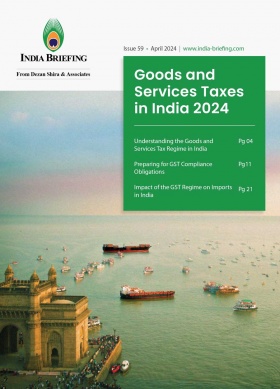Ministerial Roles in Modi’s New Cabinet: Full List and Key Assignments
Bharatiya Janata Party (BJP) leader Narendra Modi has become India’s Prime Minister for a third consecutive term. On June 9, Modi took the oath as Prime Minister, along with the induction of the new ministerial council. The makeup of the Council of Ministers – 72 members, including the Prime Minister – reflects the NDA’s delicate balancing act as Modi will be steering a coalition government. The new Union Cabinet has, however, opted for continuity, with several portfolios allocated along the lines of the previous NDA administration.
The National Democratic Alliance (NDA), led by Narendra Modi’s Bhartiya Janata Party (BJP), has assumed power at the federal level of government in India after winning a third straight term in the 18th Lok Sabha elections.
On Monday evening, June 10, Prime Minister Modi assigned portfolios to his 71 Council of Ministers. The complete list was made public after the inaugural meeting of the new Union Cabinet, which took place at the Prime Minister’s residence. With a few exceptions, notable major BJP leaders will retail their previous roles under the Modi 3.0 administration. Senior BJP party leaders Amit Shah, Rajnath Singh, Nirmala Sitharaman, and S. Jaishankar will continue to lead the four key ministries of Home, Defense, Finance, and External Affairs, respectively.
Prime Minister Modi took the oath of office in a grand ceremony held at the presidential palace in New Delhi on June 9. The swearing-in event drew thousands of invited attendees, including leaders from Bangladesh, Nepal, Sri Lanka, and the Maldives, a testament to India’s ‘Neighbourhood First’ policy.
New and old faces in the NDA government
The Modi Government 3.0‘s new Council of Ministers includes new members and some familiar faces from the previous cabinet. The BJP’s allies in the NDA were awarded a sizable representation of 11 portfolios. This will be the first time the BJP has not held a complete majority in the Lok Sabha (lower house of the Indian parliament) since 2014.
In Andhra Pradesh, where the NDA won 21 out of 25 Lok Sabha seats, two MPs each from the Telugu Desam Party (TDP) and the BJP took the oath of office. Alongside Modi, 71 ministers took an oath on Sunday, administered by India’s President Droupadi Murmu.
It is noteworthy that two members of the BJP, namely L. Murugan from Tamil Nadu and Ravneet Singh from Punjab, are included in the recently announced cabinet despite their respective losses in elections.
Article 75 of the Indian Constitution talks about the office of the Prime Minister and the Council of Ministers in India. Provisions mentioned in Article 75 for the Council of Ministers:
- Article 75(1) states that the Council of Ministers on the advice of the Prime Minister shall be appointed by the President
- Article 75(1)(a) states the limit on the total number of Ministers, including the Prime Minister, which is 15 percent of the total members in the lower house of Parliament i.e. Lok Sabha.
- Article 75(1)(b) was added in the 91st Amendment Act, it talks about the disqualification of the Ministers on the grounds of defection.
- Article 75(2) states that the Ministers enjoy their powers as long as the President holds office.
- Article 75(3) mentions that all the Ministers collectively shall be responsible to the Lok Sabha.
- Article 75(4) talks about the form of oath.
- Article 75(5) states that a Minister will resign from office if he/she is not a member of either the Lok Sabha or the Rajya Sabha for a period of six months.
Responding to the shifting political dynamics, Modi’s new cabinet embraces diversity by incorporating representatives from various communities, with a keen eye on caste equilibrium. Among the ministers, four hail from the Other Backward Classes (OBCs), including two from the most disadvantaged backgrounds. Additionally, three ministers represent the upper castes, while two ministers belong to the Dalit community, notably from the Gadaria and Paswan communities. This is aimed to sustain the NDA alliance and maintain stability in the coalition government.
Who are in Modi’s new cabinet?
The union portfolio announcement indicates that Prime Minister Modi has chosen continuity, assigning Amit Shah to the Home Ministry, Rajnath Singh to the Defense Ministry, Nirmala Sitharaman to the Finance Ministry, S. Jaishankar to the External Affairs Ministry, and Nitin Gadkari to the Road and Highways Ministry.
BJP National President JP Nadda, who was part of Modi 1.0, is also back in the cabinet as the Minister of Health and Family Welfare, and Minister of Chemicals and Fertilizers. Notably, BJP leader Anurag Thakur is not part of the new federal government, though he retained his MP seat from Hamirpur, Himachal Pradesh. Thakur formerly served in the cabinet as the Minister of Youth Affairs, Sports, and Information and Broadcasting.
Several new leaders have been inducted into the cabinet. Ram Mohan Naidu of the TDP has been allotted the Ministry of Civil Aviation, and Jitan Ram Manjhi of Hindustani Awam Morcha (Secular) has been given the Ministry of Micro, Small and Medium Enterprises.
Key figures like Shivraj Singh Chouhan of the BJP, JP Nadda of the BJP, and H.D. Kumaraswamy of the JD(S) have been assigned the Ministry of Agriculture and Ministry of Rural Development; Ministry of Health and Family Welfare and Ministry of Chemicals and Fertilizers; and Ministry of Heavy Industries and Ministry of Steel, respectively.
In the previous BJP administration, union minister Jyotiraditya Scindia was in charge of the Ministry of Civil Aviation. However, in Modi 3.0, he has been allotted the roles of Minister of Communications and Minister of Development of the North-Eastern Region.
Cabinet and council members’ ministerial portfolios in the new NDA government
|
Prime Minister |
Political party affiliation in the NDA |
Department and ministerial portfolios |
|
Narendra Modi |
BJP |
Also in-charge of:
|
|
Cabinet ministers |
Political party affiliation in the NDA |
Ministerial portfolios |
|
Raj Nath Singh |
BJP |
|
|
Amit Shah |
BJP |
|
|
Nitin Jairam Gadkari |
BJP |
|
|
Jagat Prakash Nadda |
BJP |
|
|
Shivraj Singh Chouhan |
BJP |
|
|
Nirmala Sitharaman |
BJP |
|
|
Subrahmanyam Jaishankar |
BJP |
|
|
Manohar Lal |
BJP |
|
|
H. D. Kumaraswamy |
JDS |
|
|
Piyush Goyal |
BJP |
|
|
Dharmendra Pradhan |
BJP |
|
|
Jitan Ram Manjhi |
HAM |
|
|
Rajiv Ranjan Singh alias Lalan Singh |
JDU |
|
|
Sarbananda Sonowal |
BJP |
|
|
Virendra Kumar |
BJP |
|
|
Kinjarapu Rammohan Naidu |
TDP |
|
|
Pralhad Joshi |
BJP |
|
|
Jual Oram |
BJP |
|
|
Giriraj Singh |
BJP |
|
|
Ashwini Vaishnaw |
BJP |
|
|
Jyotiraditya M. Scindia |
BJP |
|
|
Bhupender Yadav |
BJP |
|
|
Gajendra Singh Shekhawat |
BJP |
|
|
Annpurna Devi |
BJP |
|
|
Kiren Rijiju |
BJP |
|
|
Hardeep Singh Puri |
Rajya Sabha |
|
|
Mansukh Mandaviya |
BJP |
|
|
G. Kishan Reddy |
BJP |
|
|
Chirag Paswan |
LJP |
|
|
C R Patil |
BJP |
|
|
Minister of State (Independent Charge) |
Political party affiliation in the NDA |
Portfolio |
|
Rao Inderjit Singh |
BJP |
|
|
Dr. Jitendra Singh |
BJP |
|
|
Arjun Ram Meghwal |
BJP |
|
|
Jadhav Prataprao Ganpatrao |
Shiv Sena |
|
|
Jayant Chaudhary |
RLD |
|
|
Ministers of State |
Political party affiliation in the NDA |
Portfolio |
|
Jitin Prasada |
BJP |
|
|
Shripad Yesso Naik |
BJP |
|
|
Pankaj Chaudhary |
BJP |
|
|
Krishan Pal |
BJP |
|
|
Ramdas Athawale |
RPI |
|
|
Ram Nath Thakur |
JDU |
|
|
Nityanand Rai |
BJP |
|
|
Anupriya Patel |
Apna Dal |
|
|
V. Somanna |
BJP |
|
|
Chandra Sekhar Pemmasani |
TDP |
|
|
S. P. Singh Baghel |
BJP |
|
|
Sobha Karandlaje |
BJP |
|
|
Kirtivardhan Singh |
BJP |
|
|
B. L. Verma |
BJP |
|
|
Shantanu Thakur |
BJP |
|
|
Suresh Gopi |
BJP |
|
|
Dr. L. Murugan |
BJP |
|
|
Ajay Tamta |
BJP |
|
|
Bandi Sanjay Kumar |
BJP |
|
|
Kamlesh Paswan |
BJP |
|
|
Bhagirath Choudhary |
BJP |
|
|
Satish Chandra Dubey |
BJP |
|
|
Sanjay Seth |
BJP |
|
|
Ravneet Singh |
BJP |
|
|
Durgadas Uikey |
BJP |
|
|
Raksha Nikhil Khadse |
BJP |
|
|
Sukanta Majumdar |
BJP |
|
|
Savitri Thakur |
BJP |
|
|
Tokhan Sahu |
BJP |
|
|
Raj Bhushan Choudhary |
BJP |
|
|
Bhupathi Raju Srinivasa Varma |
BJP |
|
|
Harsh Malhotra |
BJP |
|
|
Nimuben Jayantibhai Bambhaniya |
BJP |
|
|
Murlidhar Mohol |
BJP |
|
|
George Kurian* |
BJP |
|
|
Pabitra Margherita |
BJP |
|
*George Kurian is the general secretary of the BJP in Kerala, where the party has broken ground by winning a seat in this Lok Sabha election. He is not a member of any house but took the oath as a minister yesterday.
Regional representation in Modi Government 3.0
All states that have four or more Members of Parliament (MPs) in the 543-member Lok Sabha are represented in the Council of Ministers; smaller states such as Arunachal Pradesh are not included.
The state of Bihar has been well represented – the appointment of Chirag Paswan and Jitan Ram Manjhi, two of the BJP’s Dalit supporters, as cabinet ministers, and eight Ministers of States.
Nine seats on the ministerial council were awarded to Uttar Pradesh, one of which went to Rajnath Singh in the Union Cabinet, while Maharashtra, which will hold assembly elections in October this year, has six MPs selected to be in the council.
(This article was originally published June 10, 2024. It was last updated June 11, 2024.)
About Us
India Briefing is one of five regional publications under the Asia Briefing brand. It is supported by Dezan Shira & Associates, a pan-Asia, multi-disciplinary professional services firm that assists foreign investors throughout Asia, including through offices in Delhi, Mumbai, and Bengaluru in India. Readers may write to india@dezshira.com for support on doing business in India. For a complimentary subscription to India Briefing’s content products, please click here.
Dezan Shira & Associates also maintains offices or has alliance partners assisting foreign investors in China, Hong Kong SAR, Dubai (UAE), Indonesia, Singapore, Vietnam, Philippines, Malaysia, Thailand, Bangladesh, Italy, Germany, the United States, and Australia.
- Previous Article Shops and Establishment Acts in India: An Explainer
- Next Article Prospects in India’s Agrochemical Sector








